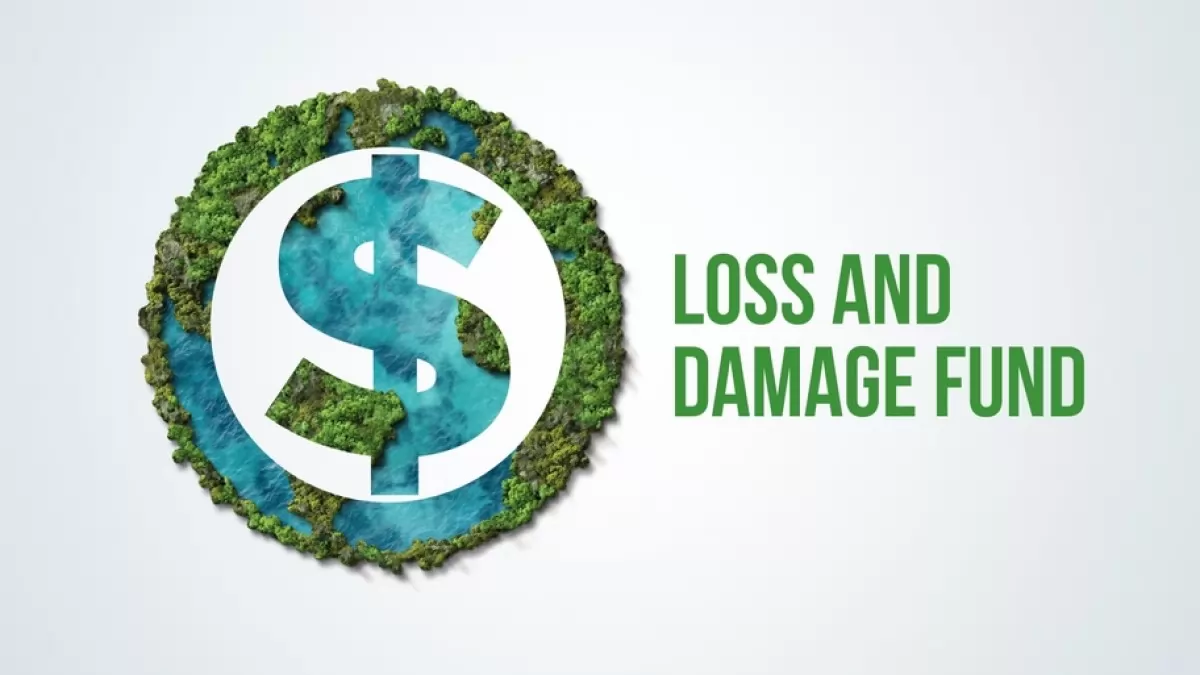By Avinash Persaud
We finally have a Fund for Responding to Climate-related Loss and Damage. Now, we must scale it up. Climate-related loss and damage are over $100bn per year and rising. Passing around a hat every few years will not get us there.
Even more enormous financing demands exist for building climate resilience and mitigating the climate. But the difference is those are future needs while loss and damage are being paid for now by the most vulnerable, who did the least to cause it. They pay through lost income and homes and rising debt.
After Hurricane Beryl ripped through the Caribbean, Grenada triggered the hurricane clause in its debt, allowing it to pause debt servicing for a few years. Climate Resilient Debt Clauses, as they are now called, provide much-needed liquidity at a scale and pace and lower interest rates than any other instrument. Ultimately, the saved debt service will have to be paid back, not at emergency rates and at a later, better time, but it is not free.
Countries that contributed most to climate change like to tell the vulnerable they need more insurance. When they respond that this is a victim-pays scheme, just in instalments, those peddling insurance say there are vast pools of risk capital in rich countries that could be employed to provide insurance, and they could subsidise the payments. This is snake oil. Total insurance pay-outs are close to the sum of total insurance premiums, just spread out across time and different types of risk. There is little leverage because the premiums must be held in liquid investments. Now that climate risks are known and rising in frequency, loss and correlation, no large pools of risk capital are rushing in to lose money. If premiums are not to rise exponentially, then subsidies will have to. And none of those offering to subsidise premiums have any budget to do so for any but a small number of the smallest countries. Vulnerable countries should spend subsidised dollars on building resilience. Multilateral Development banks should help. Every dollar spent on resilience saves seven in future loss and damage – that’s real leverage. But before resilience is built, who will pay for the loss and damage today? The poorest, still?
We have been led to believe that international levies to fund loss and damage are the pipe dreams of idealists. But this is an erroneous version of history. An exciting part of that history is when, on docking in Singapore, the crew of the Lake Palourd let on board Anthony O’Connor, a young lawyer from the firm of Drew & Napier, believing he was an Irish whiskey salesman. O’Connor then pinned a writ from the UK Government to the mast seeking compensation for the damage caused when the Lake Palourde’s sister ship, the Torrey Canyon, ran aground on Pollard Rock near Lands End, Cornwall, on March 18th, 1967. The Torrey Canyon was the first supertanker disaster. The spilling of over 100 million litres of crude oil created an oil slick measuring 270 square miles, contaminating 180 miles of coastland on either side of the English Channel and killing tens of thousands of sea birds.
But what will astound the cynics and those who waited thirty years after the Earth Summit in Rio for the new Fund for Responding to climate-related Loss and Damage is that the international community swung into action with alacrity when black tides washed up on the white beaches of Cornwall and Brittany. We had the International Convention on Civil Liability for Oil Pollution Damage (CLC) within two years. It formed the framework for the International Maritime Organisation’s Pollution Compensation Fund. Every purchaser of shipped oil and almost every consumer of oil has paid the Fund whenever a spill occurs, compensating victims of over 150 spills in the last 30 years. The US Oil Spill Liability Trust Fund is even bigger. It raises nine cents on every barrel of oil produced in or imported into the US. The Fund now has $8bn. This 0.1% levy goes unnoticed by consumers and producers in the face of swings in the price for a barrel of oil over 5% every month.
GHG emissions into the atmosphere are an equally dangerous form of pollution. Last year, at its annual general meeting, Members of the International Maritime Organisation committed themselves to the early decarbonisation of the sector. But that does not go far enough. The oil, gas and coal sectors are responsible for around half of current greenhouse gas emissions, and the high-emission products of agriculture, industrial, and manufacturing sectors contribute most of the rest. All are shipped. Almost 90% of the $25trn of goods transported yearly go by sea. Ministers will need to take the lead as the shipping industry is unlikely to levy its customers itself. Still, just a 0.2% level on the value of fossil fuels and goods transported, with penalties for under-recording and exemptions for goods produced with ultra-low emissions, could raise up to $50bn per year to finance the new Fund for responding to climate-related loss and damage in particularly vulnerable developing countries. The levy cannot fall heavily on developing countries that contributed so little to global warming.
Long has the precedent been set that owners and importers are responsible for the environmental risks of what is being shipped or produced. International mechanisms exist, and sizeable monies are raised daily –just not yet for climate-related loss and damage. What are we waiting for? A category five hurricane in the Channel?
Avinash Persaud is the special advisor to the President of the Inter-American Development Bank on climate change. The views expressed in this column are purely personal and do not represent those of the IDB. Persaud was previously a member of the Transition Committee for the new Fund for Responding to Loss and Damage.
The views and opinions expressed are solely those of the individual authors and are presented for academic interest and discussion. They do not reflect the official policies or positions of the Shridath Ramphal Centre (SRC) or its affiliates.


